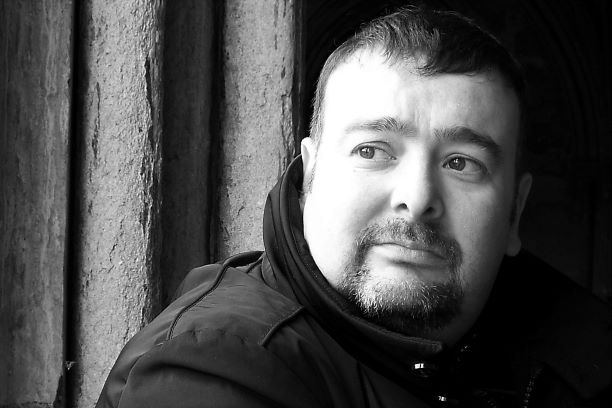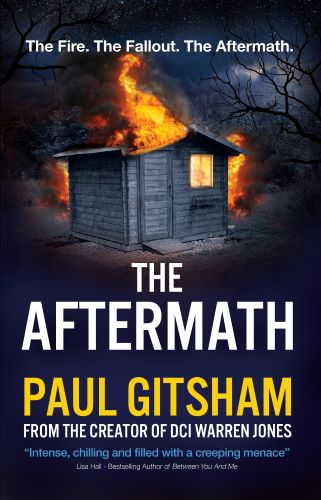Writing LGBTQIA+ Characters

Hello everyone, today’s #TuesdayTip addresses a sensitive topic that often worries writers – how to write authentic characters from the LGBTQIA+ community that don’t cause offence.
First of all, I am certainly no expert! I am a straight, white male, whose lived experiences reflect that background. So writing about characters whose identities are different to that requires some extra thought. This article is very much my perspective on the issue, and I am happy to be corrected or educated by those better informed.
In many ways, there are parallels to writing characters from a different ethnic or cultural backgrounds, a theme I explored way back in Tip#77 Colouring Outside The Lines.
Many writers choose to avoid the potential pitfalls by simply avoiding having characters who aren’t straight and cisgendered (the gender they identify with matches the biological sex they were assigned to at birth -ie male or female). The problem, is that when the size of their cast of characters expands, that becomes less reflective of our modern reality and so arguably impacts the realism of the story. Walk down any high street in modern Britain and of the strangers you pass, a significant proportion will identify and potentially live as something other than straight male or female. So if that is the case, then shouldn’t our books reflect that?
This also runs the risk of further hiding and marginalising members of society who don’t fall neatly into one of the two boxes we have traditionally assigned people to.
Another approach is for authors to say “none of this matters – I’m writing a thriller or a murder mystery, not a romance, so leave it up to the readers’ imaginations.” That’s fine. But you do have to take care here. If you think about it, if one of your lead characters is in a heteronormative relationship as part of the backstory and character development (it may not impact the story, but we like our characters to be three-dimensional), then why is such information not included about other characters? All I’m saying is to take care when crafting characters and deciding what characteristics to include.
How Do I Include Realistic Non-heteronormative Characters In My Book Without Causing Offence Or Being Too Heavy Handed?
Well the first thing to do is make sure you’ve done your research. I’m going to largely pass the buck here to a really interesting and useful source “Pride Reads”. [https://www.pridereads.co.uk/] This is a free blog with a regular email newsletter that posts articles designed to help writers navigate this topic. It’s full of practical tips, as well as thought-provoking articles. It is non-patronising and doesn’t preach. I’ve learned loads of interesting stuff that I hope makes me a better person as well as a better writer. There are also useful resources, such as when to consider sensitivity readers etc.
An especially useful resource are articles describing what stereotypes to avoid.
Although I am far from an expert, there are a few useful bits of information that I will summarise here to get you started.
What does the LGBTQIA+ alphabet soup mean?
Over the years, the LGBT acronym has expanded to include ever more letters. So here is a very simple thumbnail sketch of what these letters mean. However, I would urge you to do your own research for a more nuanced and detailed explanation for each.
Please note those marked with ** include the Essential Caveat that how the terms man or woman are used in this context and their definition does matter – you may need to do more research.
L – Lesbian. Women who like women.**
G – Gay – although also including gay women (eg Lesbians), this would often refer to men who like men.**
B – Bisexual – individuals who like men and women. ** This is one that is definitely more nuanced than my one line description.
T – Trans ** An abbreviation of transgender, this is a complex and fascinating subject on its own. It includes, but is not limited to, individuals who live as a different gender to the biological sex they were assigned at birth. This involves a spectrum from those who dress and perhaps live differently to traditional gender norms, to those who have had medical procedures or treatments. It also includes those who are non-binary (they don’t identify as male or female), or who are gender-fluid (their identity may be a mixture or may change and evolve depending on circumstances). This is a really nuanced term and I would urge you to do your research and perhaps sketch out your character before writing them, rather than making it up on the fly. Which is good advice for character development anyway.
(Note the term cis is simply the opposite to trans – so a person whose gender identity corresponds to the sex they were assigned at birth would be referred to as cis. In the same way a person whose sexual preferences are heterosexual might be referred to as straight if it was necessary to label them as such. Remember sexuality and gender identity are two different things, trans doesn’t = gay and cis doesn’t mean straight.)
Q – Queer This is an umbrella term for individuals who don’t feel they fall into the traditional heteronormative way of labelling people. If you use this term, be aware that it used to be a pejorative term used as an insult, but has been reclaimed in recent decades by the community. So consider the context of your story.
I – Intersex this term describes those who physical or genetic characteristics don’t necessarily align with the traditional binary notions of male and female bodies. As our understanding of anatomy has evolved beyond the basic two XX chromosomes = female and XY = male, with the corresponding genitalia, this is now seen as less of a disorder, more a reflection of natural human variation. Again, context is essential here – the language and attitudes towards an Intersex individual, and their lived experiences, will vary enormously depending on the time period, society and culture that your character is living in. The term hermaphrodite is an offensive slur – so don’t use it casually, unless your story needs it (eg as an insult).
A – Asexual This is an umbrella term for those with a lack, or low-level of, sexual attraction to others. Again, it is nuanced and complex, with a spectrum from a complete lack of any desire for sexual attraction or a limited attraction under specific circumstances. Some individuals may be Aromantic – meaning they are uninterested in romantic attachments – whilst others experience romantic or emotional attraction to others and desire intimacy, but not necessarily sexual intimacy. Some individuals may engage in sexual activity, for a range of reasons ranging from the practical (eg procreation), for companionship or to please a partner. Obviously, this is a potentially very sensitive subject, so again develop your character accordingly. Asexuality is different from celibacy – a choice to abstain from sexual activity.
+ Plus – everything else. As you have no doubt realised, sexuality and gender identity is a complex and changing landscape. The plus represents that. There are many other terms and identities such as pansexual and individuals may come under one term, be represented by multiple terms or perhaps not feel that they fit any terms. The plus allows for that diversity.
Some simple take messages that I have learned.
Fair and accurate representation is what’s important
From reading the blog posts by Pride Reads and other sources, it seems that what LGTBQIA+ readers (and viewers) want most of all is to be recognised and made a part of the stories they read. They aren’t asking for special treatment or demanding that all stories have visible lead characters from their communities. What they want is to read strong, well written stories that reflect society as it exists and where appropriate recognise their community’s role within it. They don’t want to be shoe-horned in to increase diversity, rather they want characters that exist in an organic manner and have their role to play, big or small. Just like anyone else in society. Don’t use sexual or a gender identity as a way to make your writing more diverse, rather try to write naturally diverse and realistic stories that happen to have a range of different characters. You aren’t playing diversity Bingo!
Identity does not have to be the “story”.
The sexuality or gender identity of characters does not necessarily have to be a story in and of itself. Ask yourself this question. If you are writing a police procedural, how is sexuality and gender identity addressed for your heteronormative and cis characters? Do you dwell on your male detective’s relationship with his wife? If not, why would you dwell upon a lesbian character’s relationship with their girlfriend? If you mention a detective is having difficulties because her long hours are affecting her homelife with her husband, then could a gay detective be having the same issue with his husband? Try not to treat LGBTQIA+ characters differently, just because of their sexuality, unless it is key to the story.
Coming Out stories are tricky
A recent article on Pride Reads stated that many LGBTQIA+ readers are getting bored of “coming out” stories. Every person is different and experiences can vary enormously. Writers don’t usually write about heteronormative characters’ journeys to accept their sexuality or how they announced it to their loved ones, so unless it is really necessary and a part of the story, don’t feel compelled to explain how your lead detective came out to their loved ones twenty years ago. In other words ask if it is necessary or just a way to convince yourself that you are a diverse writer.
Killing LGBTQIA+ characters
The final point is a sensitive issue. Oftentimes LGBTQIA+ readers feel that queer characters are disproportionately killed off or treated as victims. A recent well-known thriller series (I’m not naming it to avoid spoilers) culminated in the queer lead characters dying at the end. Some viewers, who had grown very attached to the characters and felt that their visibility in the series was an important cultural landmark, were very upset. Others suggested that the denouement of the story needed the characters to die for closure, and it was irrelevant that they were queer. That’s an argument for another day. All I would urge is regardless of your intentions, carefully consider if killing that character because they are queer is appropriate, even if you think you are doing an important job eg highlighting an issue. But then the same argument should be applied to other situations eg fridging (killing a token female character so the male characters have an excuse to exact revenge) or ‘white saviour’ stories where a heroic white character gets justice (and accolades) for saving or avenging people of colour.
At the end of the day, if you feel unsure if your stories chime with the times, are accurate, or risk offence, consider seeking the opinion of sensitivity readers. Your publisher may be able to help with this, or you can contact organisations such as Pride Reads for advice.
What are your thoughts on this topic? Do you have any advice or recommendations? As always, feel free to comment here or on social media.
Until next time,
Paul
PS: If you are a writer with a tip to share, or fancy writing a fictional interview between you and one of your characters, please feel free to email me.



















